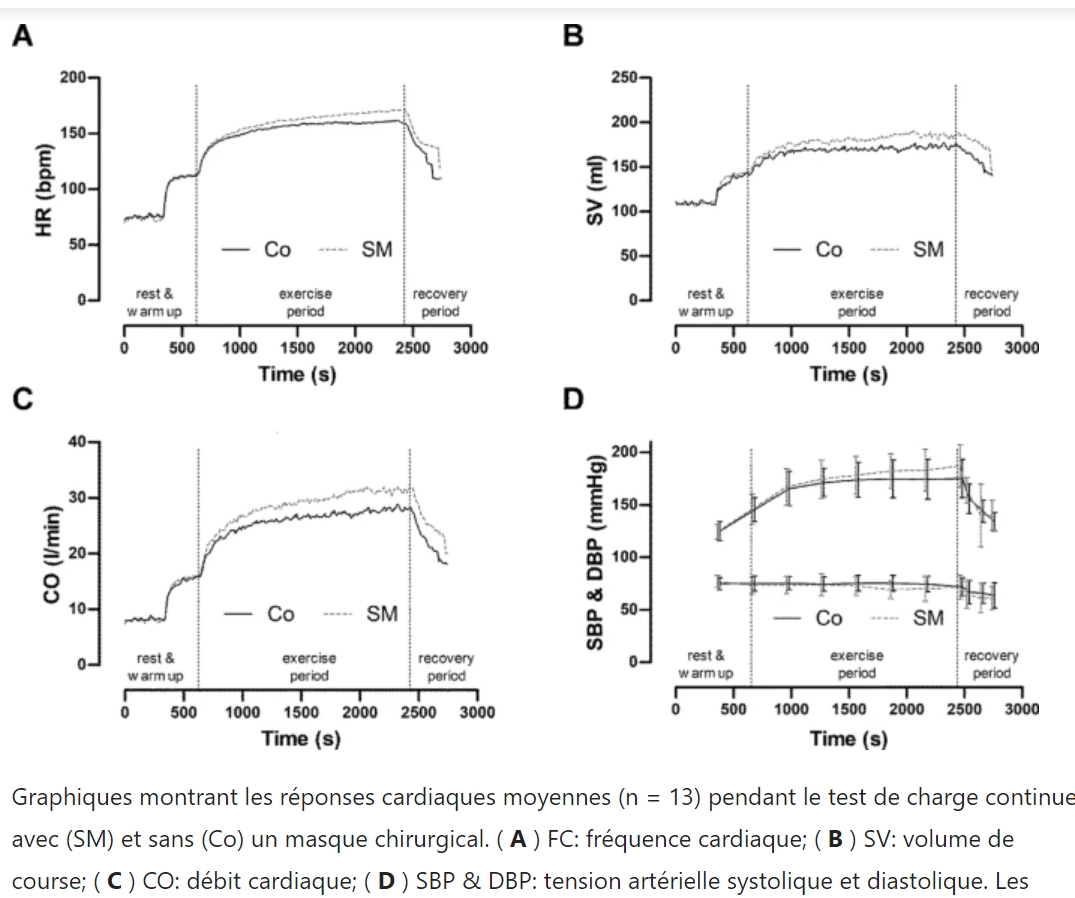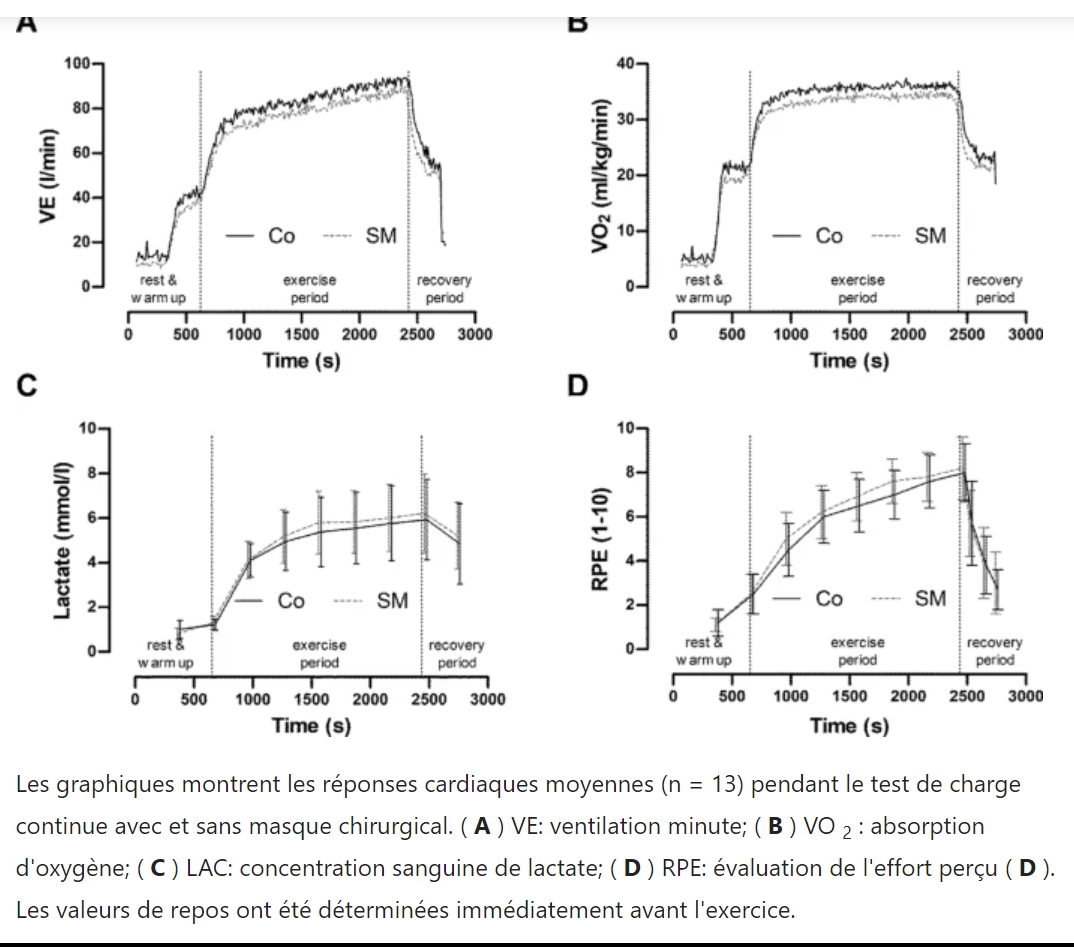Effects of surgical face masks on cardiopulmonary parameters during steady state exercise
J. Lässing, R. Scientific Reports volume 10, Article number: 22363 (2020)
Wearing face masks reduce the maximum physical performance. Sports and occupational activities are often associated with submaximal constant intensities. This prospective crossover study examined the effects of medical face masks during constant-load exercise.
Fourteen healthy men (age 25.7 ± 3.5 years; height 183.8 ± 8.4 cm; weight 83.6 ± 8.4 kg) performed a lactate minimum test and a body plethysmography with and without masks. They were randomly assigned to two constant load tests at maximal lactate steady state with and without masks. The cardiopulmonary and metabolic responses were monitored using impedance cardiography and ergo-spirometry.
The airway resistance was two-fold higher with the surgical mask (SM) than without the mask (SM 0.58 ± 0.16 kPa l−1 vs. control [Co] 0.32 ± 0.08 kPa l−1; p < 0.01). The constant load tests with masks compared with those without masks resulted in a significantly different ventilation (77.1 ± 9.3 l min−1 vs. 82.4 ± 10.7 l min−1; p < 0.01), oxygen uptake (33.1 ± 5 ml min−1 kg−1 vs. 34.5 ± 6 ml min−1 kg−1; p = 0.04), and heart rate (160.1 ± 11.2 bpm vs. 154.5 ± 11.4 bpm; p < 0.01). The mean cardiac output tended to be higher with a mask (28.6 ± 3.9 l min−1 vs. 25.9 ± 4.0 l min−1; p = 0.06). Similar blood pressure (177.2 ± 17.6 mmHg vs. 172.3 ± 15.8 mmHg; p = 0.33), delta lactate (4.7 ± 1.5 mmol l−1 vs. 4.3 ± 1.5 mmol l−1; p = 0.15), and rating of perceived exertion (6.9 ± 1.1 vs. 6.6 ± 1.1; p = 0.16) were observed with and without masks.
Surgical face masks increase airway resistance and heart rate during steady state exercise in healthy volunteers. The perceived exertion and endurance performance were unchanged. These results may improve the assessment of wearing face masks during work and physical training.















